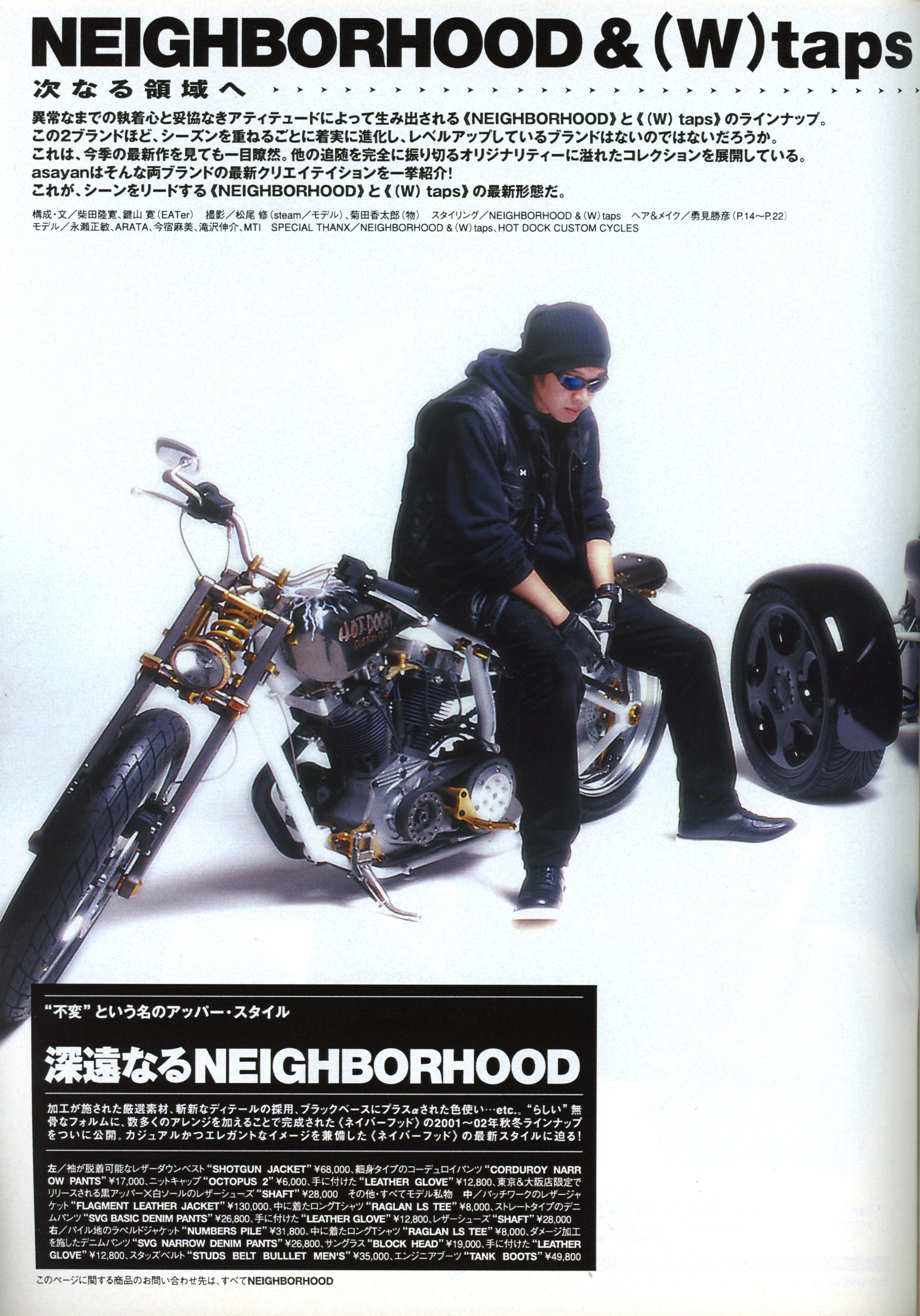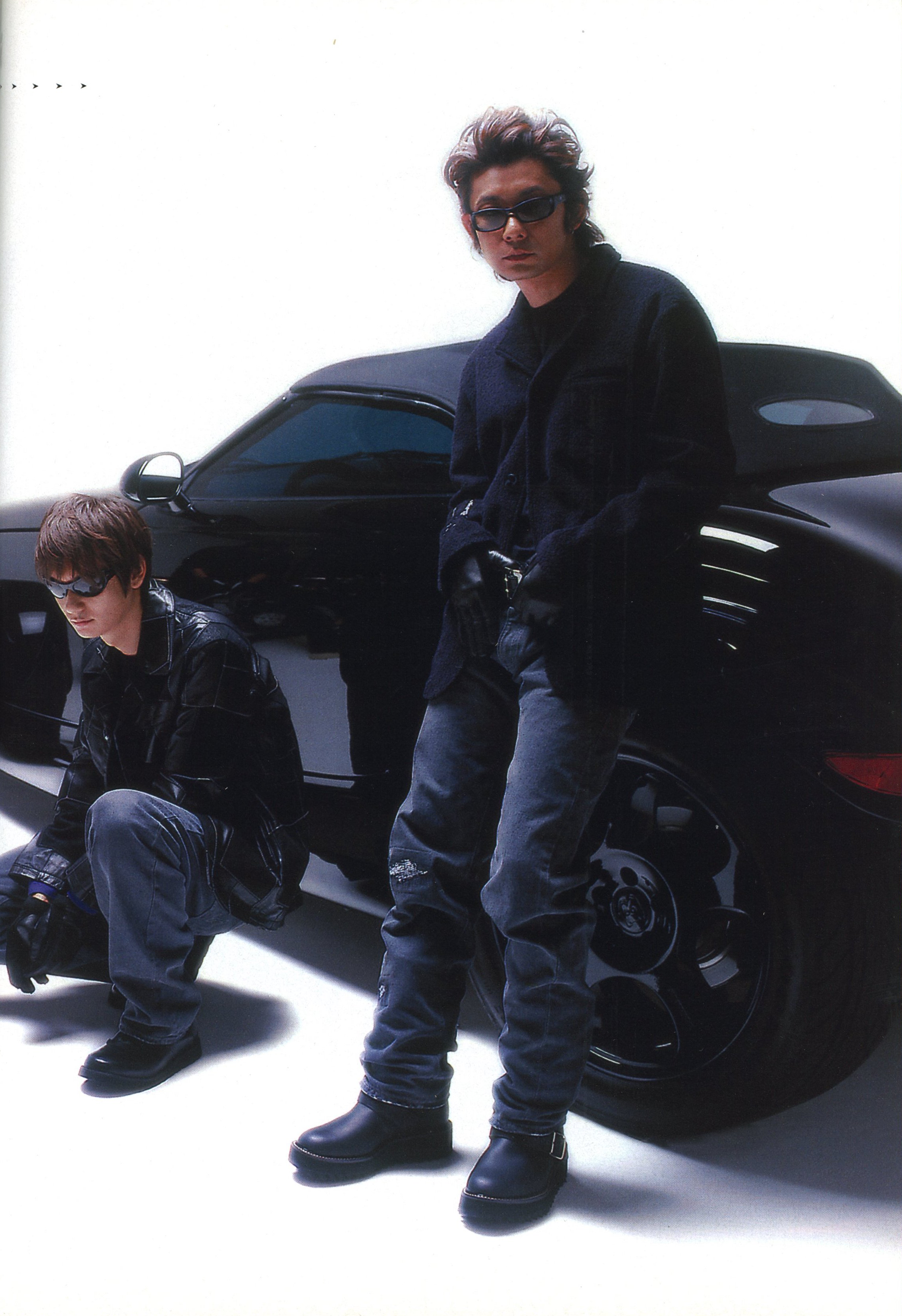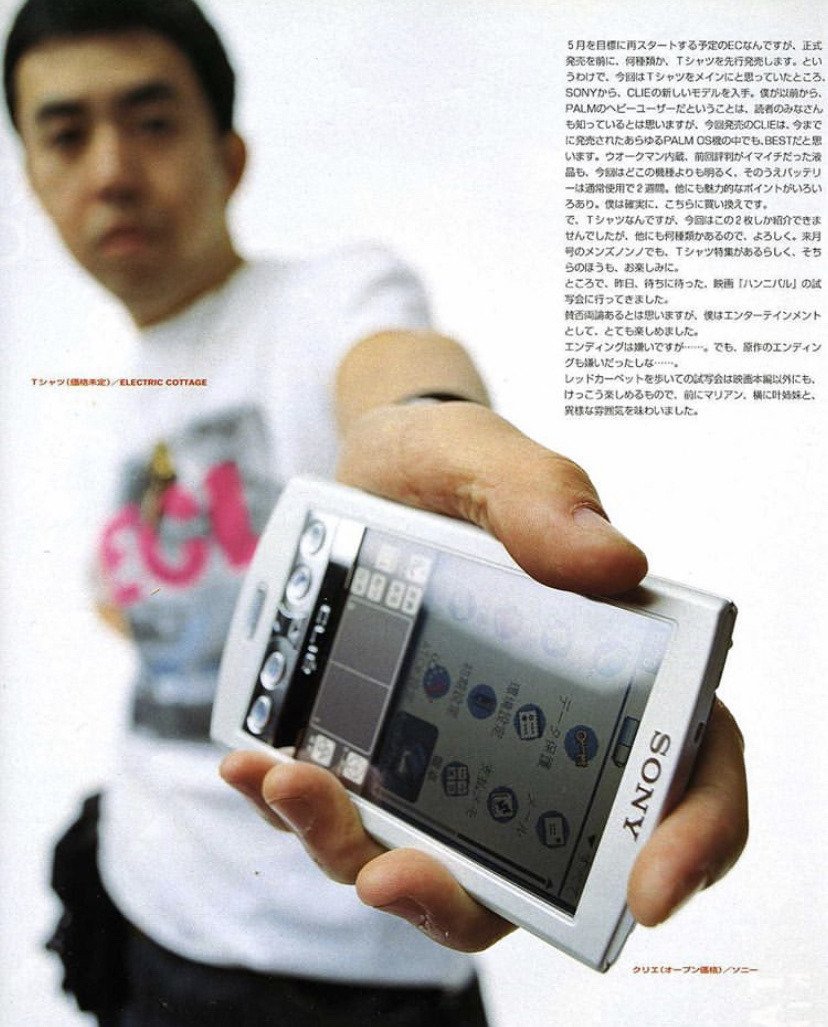Harajuku Street Camo: The History of WTAPS

The Japanese fashion world has always been different from the rest, starting from the concepts of its origin to the birth of the various brands.
Tetsu Nishiyama aka “TET”, is one of those revolutionaries capable of recreating a subversive and rebellious movement. While having worked with many brands and stores, today we know him as the founder & creative director of WTAPS. To get an idea of what WTAPS is, TET was asked "If WTAPS were a song, what would it be?" and replied "a mix of The Clash, Hans Zimmer, Public Enemy and Creedence Clearwater Revival".
To understand WTAPS’ history and the evolution of Japanese streetwear, we must start nowhere but in the Ura-Harajuku area.
The Japanese economic crisis and the rise of the URA-Harajuku movement
In the 1990s, the reference point for streetwear was America, where Supreme, Stussy and the hip-hop dress code dominated youth cultures in all its aspects. The US economy reigned supreme over the world and every trend, in most cases, started from there. At the same time, Japan was living in a state of economic stagnation, which lasted from 1991 until 2001. That dark period came to be known as 'The Lost Decade', when the real estate bubble burst and economic growth came to an abrupt halt.
The post-World War II era led to Japan's resurgence as a major economic power, peaking in the 1980s with the world's largest gross domestic product. At that point, all countries were interested in doing business with Japan, especially the United States. But as is often the case, when you get to the top of the highest peak, the fall becomes more painful. To help offset global trade imbalances, Japan joined other major world economies in the Plaza Agreement in 1985. The resulting monetary policy implemented by the Japanese government led to a spike in stock and property valuations, which would plummet in the years to come.
The Golden Age of Japanese Streetwear
The weight of this crisis had an important influence on the development of the Ura-Harajuku streetwear movement and other youth cultures, especially with the Do It Yourself [DIY] factor. Stepping out of the Western shadows meant unleashing creativity and art in a unique and unrepeatable way. The Harajuku district became the stage for the new Japanese fashion movement, and WTAPS was no exception. There were not yet the big luxury brands that dominated the constant influx of people and trends, but a collection of small shops and brands with their own ideology, vision, and desire to present to the world.
At the heart of the UraHara movement was the desire to interpret fashion outside of any regular, established canon. Wearing a garment deconstructed and recreated according to precise themes and aesthetics left room for different interpretations and, therefore, for completely new styles never before seen on the face of the earth.
In 1993, Nigo and Jun Takahashi, two friends at the Tokyo Bunka Fashion College, founded "NOWHERE", a small personal boutique where they exhibited their designs, namely UNDERCOVER and import clothing seleceted by NIGO, along with BAPE later on. Around the same time, the young Shinsuke Takizawa founded NEIGHBORHOOD, designer SK8THING started to collaborate on BAPE's graphics, Hiroshi Fujiwara would start his multiple brands and stores like GOODENOUGH, and Tetsu Nishiyama started his first brand Forty Percent Against Rights with SK8THING. Beyond the obvious economic crisis, there were great creative minds ready to shine all over the world.
They had absorbed the trends that were exploding in London, New York and Paris, where there was a strong nationalism towards the respective sub-cultures, turning them into a movement that was totally Japanese in concept and execution. There had been a drastic evolution from the 1980s, where the technical efficiency of the garment was taken into account more than the aesthetics sought. With the UraHara movement, the trend was reversed, aiming to create a style that recalled Japanese culture.
At the right time, in the right place
Nishiyama, living this golden period to the full, was able to channel the most important lessons for his career: being unique in stylistic creativity and "Placing Things Where They Should Be", a phrase that encapsulates Nishiyama's idea of design.
With "Forty Percent Against Rights" he began to experiment with his philosophy, which, compared to WTAPS, focuses on a subversive and political style. Nishiyama's initial idea was not focused on a stylistic revolution, but on pushing the barriers of political correctness. The first graphic experiments with clear messages were an act of rebellion against a fashion system that was still too closed in narrow elites with little to say.
FPAR was born out of a concept that SK8THING often recited: "If an original work of art has been modified by at least 40%, the rights to that particular work of art no longer exist".
Military taste, religion and anarchy: Tetsu Nishiyama's perspectives
In fact, the Japanese creative did not have an academic education and basically entered this world as a 'hobby'. The explosion of the various exponents of the Ura-Harajuku movement was a fundamental event for the success of Japanese streetwear. In an interview, Nishiyama himself explains the concept behind FPAR:
“It’s about anarchism, not anarchy - there’s a difference. Anarchism is a principle. It’s how people in the past were ‘politically opposed’, how they reflected themselves in the media, how they communicated to the media - that’s what interested me. Of course, anarchism was reflected in design, in music, in fashion, in films. Even more, in the 1990s there was an example of the ‘public enemy’, the method they used to fight for human rights, against discrimination.”
The slogan for FPAR was "to sabotage the fabricated information regulated by mass media using immediately effective forms of expression".
Nishiyama's mentality, in relation to the concept of design and fashion, relates to two main principles: "Miya-Daiku" and Taoism. The former is a name given to a group of professional carpenters in Japan who are famous for being able to use every single piece of wood and always get the most out of it. The Japanese designer reflected himself in this, because he constantly sought the different, the unprecedented, the beauty in imperfection, and therefore the detail that differentiates you from everyone else.
While, following the Taoist religion, Nishiyama focuses on harmony in his collections, leaving the wearer free to see them from different perspectives. Referring to another Taoist principle, namely spontaneity, his philosophy is to create "free" and almost empty designs so as not to limit the taste of his consumers.
With Forty Percent Against Rights, we perceive the transitional phase in Nishiyama's life, as he made his moves to join the circle of creative geniuses in Harajuku. Stepping outside the box was his mantra, finding daily inspiration and creating in a dynamic way that was never the same as the day before.
WTAPS and pragmatic design
Just three years after the birth of FPAR, Nishiyama wanted to take the ultimate leap forward by creating WTAPS. Literally, it reads 'Double Taps', referring to a military technique in which two shots are fired in rapid succession at a specific target. This time Nishiyama's idea shifted to recreating collections evocative of a military style, square and yet still subversive and rebellious.
The creations focus on field jackets with patches reading "WTAPS", "ROGUE SQUAD" or "MOUT" [Military Operation on Urban Terrain], backpacks, cargo, M-65 bomber jackets and anything else that recalls this world. WTAPS is a brand that most of all has an unmistakable and unchanging philosophy.
Confessing to Silver Mag, Nishiyama opens up about this personality of his that is constantly searching for a message in his garments:
“When I create something I have a habit of never stopping thinking. This habit is made by the influence of that period. And I also try not to be direct but to give a subtext or consider a layered structure. With that, I’m sure SKATETHING has influenced me a lot. When I create something, I try to be conscious. The message tends to be in a deeper place, I think.”
If with FPAR TET was thinking more about the concept of rebellion, WTAPS follows a mono-thematic spirit but with infinite facets. The practicality and functionality of military clothing has always fascinated Nishiyama, who has turned it into the core of his project.
This perspective led him to open, in 2011, the first and only WTAPS flagship store, Guerrilla the Incubation Period (GIP), referring to the hiding places of soldiers in war.
"Referring to surplus vintage military clothing, we created a set of jungle shirts and trousers as our first fashion item as WTAPS®. Since then, we have produced uniform-inspired items every season in various ways," Nishiyama recalls in an interview.
MILL, the "militarised" line
From the very beginning, as documented by Asayan magazine, WTAPS was the perfect reflection of military armies, but with a fashion twist. Confirming its love for this world, the brand uses the NATO phonetic alphabet to describe a size, i.e. Lima for Large and Sierra for Small, as well as creating the "MILL" line.
The latter encompasses a collection of military-inspired uniforms that are at the heart of Nishiyama's inspirations. Six garments have been created - the M-65 jacket and trousers, the camouflage shirt and trousers, and the BUDS shirt and trousers - which can be customized fully by their owners.
This was the idea behind Tetsu Nishiyama's design: to allow the wearers of these garments to experience them as they wish, applying special patches, different washes, and other unique customizations. WTAPS is very keen to create a community linked to the brand's ideals of complete creative freedom.
Over the years, WTAPS' many collaborations [Vans, Undercover, Supreme, New Balance, Bape, Timberland, Clarks] have positioned them as one of the hottest brands of the moment. It is not the hype behind the brand that drives its success, but on being linked to personal subcultures. Nishiyama has brought his life experiences to his brands, from the small district of Harajuku to the roof of the world.
Text By Alessandro Ranieri














![PEOPLE OF THE APE! for Smart Max Vol. 2 [2001]](https://images.squarespace-cdn.com/content/v1/57825361440243db4a4b7830/1664168533768-OTX6EVT60QUMT8O6CXVI/308677209_497709145189756_6943226394915914090_n.jpg)
